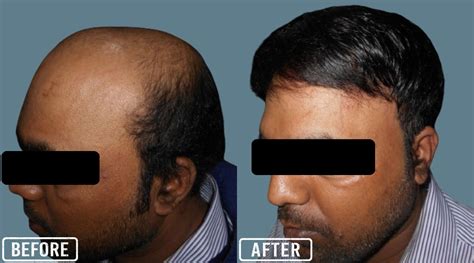Non-Surgical Hair Replacement: A Game-Changer for Modern Hair Loss
Losing hair can be a distressing experience, but it doesn’t have to be permanent. With the emergence of non-surgical hair replacement techniques, individuals can now reclaim their confidence and achieve their desired head of hair without undergoing invasive surgery. This article will delve into the world of non-surgical hair replacement, exploring its types, benefits, and transformative effects.

Types of Non-Surgical Hair Replacement
Non-surgical hair replacement encompasses various methods that can be tailored to specific hair loss needs. The most common techniques include:
-
Hair Toppers (Toupees): These are wigs that cover the top of the head, typically used for concealing hair loss in the crown area. They are lightweight, breathable, and come in a wide range of colors and textures to match natural hair.
-
Hair Extensions: Extensions involve attaching artificial or natural hair pieces to the existing hair to add length, volume, or enhance color. They are available in various forms, including clip-ins, tape-ins, and fusion bonds.
-
Hair Weaves: Weaves involve braiding natural or synthetic hair into the existing hair to create a fuller, thicker look. They are often preferred for African-American hair textures.
-
Lace Frontal and Closure Units: These are hair systems that are attached to the scalp’s edge, providing the illusion of a natural hairline. They come in various materials, such as Swiss lace or HD lace, and can be styled and colored as desired.
Benefits of Non-Surgical Hair Replacement
Non-surgical hair replacement offers a multitude of benefits, including:
-
Instant Hair Transformation: These techniques provide an immediate and noticeable improvement in hair appearance, boosting confidence and self-esteem.
-
Versatile Styling Options: Non-surgical hair replacement methods allow for endless styling possibilities, from sleek ponytails to luscious curls, giving individuals the freedom to express their unique personality.
-
No Surgery Required: Unlike traditional hair transplants, non-surgical methods are non-invasive, eliminating the risks associated with surgery and ensuring a comfortable, pain-free experience.
-
Cost-Effective: Compared to surgical options, non-surgical hair replacement is more cost-effective, making it accessible to a wider range of individuals.
-
Temporary or Permanent Solution: Non-surgical techniques can be either temporary or permanent, allowing individuals to choose the solution that best meets their needs and preferences.
How to Choose the Right Non-Surgical Hair Replacement Method
Selecting the optimal non-surgical hair replacement method involves considering several factors:
-
Type of Hair Loss: The cause and severity of hair loss will influence the type of technique that is most suitable.
-
Lifestyle and Maintenance: Different methods require varying levels of maintenance and care. Consider your daily routine and ability to commit to upkeep.
-
Budget: Determine the financial investment you are willing to make before exploring the range of non-surgical hair replacement options available.
The Impact of Non-Surgical Hair Replacement
Non-surgical hair replacement has had a profound impact on the lives of countless individuals:
-
Enhanced Self-Esteem: Regaining a full head of hair can significantly improve self-image and boost confidence in social and professional settings.
-
Improved Quality of Life: By alleviating the emotional distress caused by hair loss, non-surgical hair replacement contributes to an overall peningkatan in well-being.
-
Reduced Social Stigma: Non-surgical methods have helped to reduce the stigma surrounding hair loss, empowering individuals to embrace their baldness or enhance their existing hair.
The Future of Non-Surgical Hair Replacement
As technology and innovation continue to advance, the future of non-surgical hair replacement looks promising:
-
Customized Hair Systems: The use of 3D printing and scanning technologies will enable the creation of highly customized hair systems tailored to individual scalp shapes and hair textures.
-
Bioengineered Hair: Scientists are exploring the potential to grow natural hair follicles in a laboratory setting, which could lead to revolutionary advancements in non-surgical hair restoration.
-
Nanotechnology Applications: Nanotechnology could play a role in developing ultra-lightweight and breathable hair replacement systems that seamlessly blend with natural hair.
Non-Surgical Hair Replacement: A Non-Invasive Path to Hair Confidence
Non-surgical hair replacement offers a transformative solution to hair loss, empowering individuals to regain confidence and embrace a revitalized self-image. By understanding the types, benefits, and considerations involved, you can make an informed decision about the best non-surgical hair replacement method for your unique needs. Remember, hair loss is not a setback but an opportunity to reinvent yourself and enjoy the benefits of a full, beautiful head of hair.
